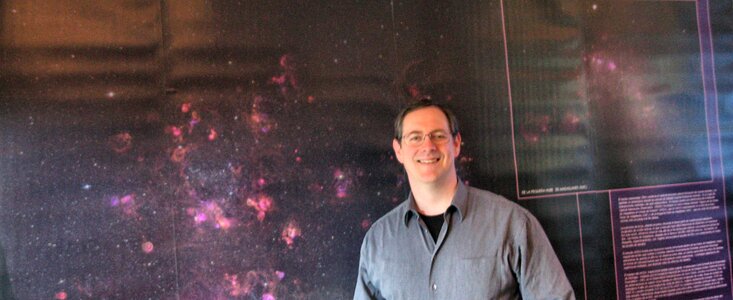Chris Smith Named Director of Cerro Tololo Inter-American Observatory
20 August 2008
Dr. R. Chris Smith has been selected as the next director of Cerro Tololo Inter-American Observatory (CTIO). Smith will succeed Dr. Alistair Walker in November. Walker will return to the scientific staff of CTIO after five years as director.
Based in La Serena, Chile, CTIO is part of the National Optical Astronomy Observatory (NOAO), the US national observatory for nighttime optical/infrared astronomy funded by the National Science Foundation. On Cerro Tololo, CTIO operates the Blanco 4-meter telescope and a suite of one meter-class telescopes for a university consortium called SMARTS (as well as several tenant facilities). On nearby Cerro Pachón, CTIO operates the SOAR 4.1-meter telescope (on behalf of an international partnership) and supports U.S. participation in the international Gemini South 8-meter telescope.
“Chris has years of experience working for CTIO, he has led a major southern-sky survey of the Magellanic Clouds, and he recently headed the NOAO-wide Data Products Program during a period of extensive developments in virtual observatories,” said NOAO Director David Silva. “I am confident he will excel in this new role as an observatory director.”
“I thank Alistair for his excellent service as CTIO director during an exciting era when the Dark Energy Camera project for the Blanco 4-meter telescope was born, and the Large Synoptic Survey Telescope project chose a peak within the AURA compound in Chile for its future site,” Silva added. “Alistair has left the observatory extremely well positioned for the coming years.”
As a member of High-z Supernova Team, one of two teams that discovered the accelerating expansion of the Universe in 1998, Smith was recently a co-recipient of the 2007 Gruber Cosmology Prize. He is also the principal investigator of the Magellanic Cloud Emission Line Survey (MCELS), which mapped out the interstellar medium of the Large and Small Magellanic Clouds in the emission lines of hydrogen, oxygen, and sulfur to improve our understanding of the interactions between stars and the gas and dust which surrounds them.
Smith, age 44, first joined CTIO as a postdoctoral fellow after earning a Ph.D. from Harvard University in 1991. He spent three years at CTIO, followed by three years at the University of Michigan as a McLaughlin Postdoctoral Fellow before returning to CTIO as a staff astronomer in 1998. He received a B.A. in astrophysics from Indiana University in 1986.
While an undergraduate at Indiana, he participated in NOAO summer student programs both at the National Solar Observatory in Sunspot in 1985 and at Kitt Peak National Observatory (KPNO) in Tucson in 1986. Following up on his interest in strong NOAO’s student programs, he restarted the Research Experiences for Undergraduates program at CTIO.
“CTIO is a cornerstone of both the future of NOAO and, more generally, the future of U.S. astronomy. The facilities available today at CTIO, SOAR, and Gemini and the promise of the exciting next generation of facilities located in Chile, including ALMA, LSST, and GSMT are a magnificent combination,” Smith said. “I look forward to building upon the strong foundation and excellent staff we have in Chile to take full advantage of the exciting scientific opportunities the future holds.”
Notes
Based in Tucson, AZ, NOAO consists of CTIO, KPNO, the NOAO Gemini Science Center, an astronomical instrumentation and technology development program, and related education and outreach activities, including national U.S. leadership in planning for the International Year of Astronomy 2009.
NOAO is operated by the Association of Universities for Research in Astronomy (AURA), Inc., under a cooperative agreement with the National Science Foundation.
More information
For more information, see the NOAO Web site.
Contacts
Douglas Isbell
Office of Public Affairs and Educational OutreachNational Optical Astronomy Observatory
Tel: 520/318-8230
Email: disbell@noao.edu



